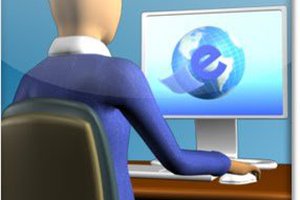Overview
Backcountry and side country exploration is becoming increasingly popular. In 2016, Yosemite National Park, for example, saw 25% more visitors than the previous record year, at 5M (1). Skiers have been flocking to Alpine Touring to get away from crowded resort slopes. Increased interest in the outdoors, however, brings increased risk exposure for those trying to get off grid. The ubiquity of cell phones and connectivity can give people a sense of security and backup that doesn’t hold in the backcountry. This, combined with increasing ease of access, can sometimes lead to trouble for underprepared explorers.
Unfortunately, backcountry rescue can be tremendously costly, both in terms of time a victim often doesn’t have, and dollars required to marshal resources.
With WAASP, we aim to significantly decrease these costs for a large subset of rescue situations. WAASP is an airborne sensor platform for rapidly locating victims in a variety of backcountry scenarios. The last ten years have seen an explosion of activity in small-scale aerial vehicles, spurred on by decreasing electronics manufacturing cost and exponentially increasing density of compute power. At the same time, sensors have seen a similar shift, in some instances orders of magnitude cheaper and smaller than they once were. A $1200 consumer drone can fly a stabilized, cinema-quality camera with 20 minutes of flight time, when only a few years ago the only option was a manned helicopter with a gimbal system costing hundreds of thousands of dollars. WAASP takes advantage of these drone technologies and compact sensors to drastically reduce the time and dollar cost of victim location.
In short, WAASP aims to put mission-tailored aerial search capability in the hands of backcountry first responders for under $10,000, so that they might begin rapid wide-area search in the earliest stages of incident response, rather than waiting until the situation is dire.
Use Cases (Mission Profiles)
Avalanche Rescue
In-bounds and side-country avalanches represent a significant danger to large numbers of recreational skiers, and thus are a significant focus of mountain safety programs at ski resorts around the world. In general, in-bounds avalanches are very well controlled with modern operating protocols and mitigation efforts. For example: my home mountain (Mammoth Mountain) is at a relatively high elevation in the Eastern Sierra and sees an average of 400 inches of snow per year. It’s got a number of steep areas, prone to avalanche in commonly occurring conditions. Ski patrol has an extensive storm closure protocol to keep guests out of hazardous areas (on prone faces as well as in the areas slides can end up), and keeps a close eye on conditions to reopen this terrain after risk has passed. Besides these passive measures, they take active measures to trigger avalanches, or verify by failure to trigger that the snowpack is safe, both during and after storms. These include 105mm Howitzer artillery placements to bombard avalanche-prone faces, as well as a protocol for hand-placed RDX charges post-storm.
A well-prepared backcountry skier can take passive precautions, such as monitoring weather conditions and taking actual snowpack measurements (avalanche pit), to assess the risk of an avalanche during their activity. However, they can’t take the same kind of active triggering measures that resorts can. As well, active measures still aren’t fool-proof. The protocols above work 99% of the time, but there are still exceptional cases when a triggered slide is bigger than predicted, or changing conditions lead to unexpected slides after mitigation has already happened. For these instances, there’s a robust but time consuming on-mountain search and rescue protocol. In the backcountry, life-saving...
Read more » alexwhittemore
alexwhittemore
 Lex Kravitz
Lex Kravitz
 RichardCollins
RichardCollins
 Simon Merrett
Simon Merrett
 Bharat Kumar
Bharat Kumar